My first home in Crete was in the middle of town, a small two-bedroomed apartment on Sfakion St where I lived with my father.
Sfakion St begins off a very busy road clogged with traffic most hours of the day in the centre of town; this same busy road leads you straight to the most well-known landmark of the town, the Agora. North of Sfakion St is Tzanakaki St, where the trendy fashion shops are located; on its southern side is Apokoronou St, which has always been home to a category of shops belonging to the more functional class, although it has undergone some gentrification relatively recently, with businesses formerly located in the more expensive rental areas moving here since the economic crisis. The streets are lined with businesses on the gound floor and offices and doctors' surgeries in the apartment blocks above them. Sfakion St stands out as an exception among them.
There are many good reasons why people would choose to shop from the cheese shop, butcher, bakery, grocery and cookie shop on Sfakion St instead of walking to the Agora which is in essence a hop, skip and a jump away from this area: the shop owners have built a relationship of trust with their regular customers, ensuring that they sell only high quality products. Not only that, but it's easier for most people to carry their groceries back home rather than walk twice the distance from the Agora.
Sfakion St holds a unique position in Hania; it forms an island of mainly residential properties, combined with a few stores that cater especially for the residents of this unique neighbourhood, located in the heart of Hania in one of the most urban areas of the town, and all this, despite being nestled between two of the busiest and most commercial streets in town. Office workers may share apartment blocks with permanent residents, while the ground levels of most of the buildings house stores, or private parking space. The stores all help to lend an air of self-sufficiency to the self-contained residential urban islet.
These photos were taken at 4pm on a Saturday afternoon; the shops are closed and the street becomes deserted. Cafes located on Sfakion St primarily serve the needs of the office workers in the area.
Towards the top end of Sfakion St, the buildings are used mainly as residential properties.
The first formidable-looking functional apartment blocks in the street came up during the building boom after the late 1970s, replacing the houses originally built on each site: detached single-family dwellings with spacious gardens, serving the needs of an extended family that included aging parents and sprightly grandchildren. A few of these charming houses remain on the street, some on better shape than others. But the area is considered as prime land in a tight property market: houses are often demolished to make way primarily for for modern office blocks.
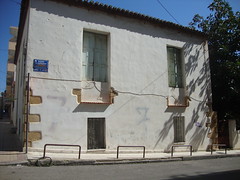
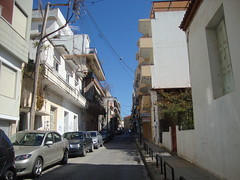
A mish-mash of architectural styles characterises the area, without detracting from its primarily urban appearance.
The old sits side-by-side...
... with the new - and not so new.
There are still quite a few houses on the street that have escaped demolition and continue to be used as private residences. Some of them are in what looks like good condition, while others have seen better days. They are often rented out to immigrants; the original owners probably died and left the property to their children who have moved out of the area. I was never a grat fan of living in the middle of the town. It felt unnatural to be surrounded by cement, glass and steel. At the same time, my father and I were luckier than most residents in the area, because our apartment windows weren't located directly across from someone else's windows: our balcony view looked on to the municipal park, popularly known as Kipos (meaning 'garden'). Good thing too: my father suffered from claustrophobia and was always thankful that he never felt so confined in his last home on earth...
©All Rights Reserved/Organically cooked. No part of this blog may be reproduced and/or copied by any means without prior consent from Maria Verivaki.
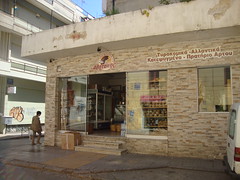
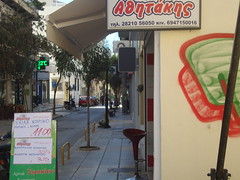
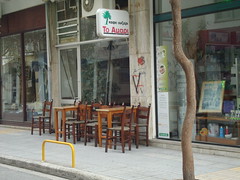
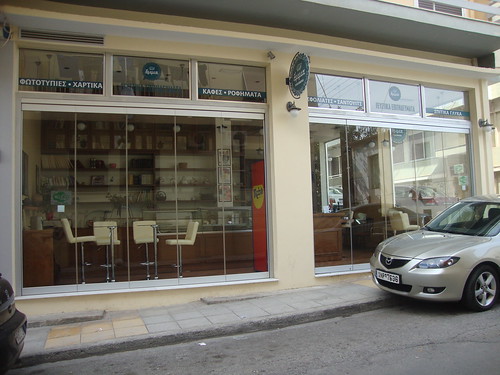
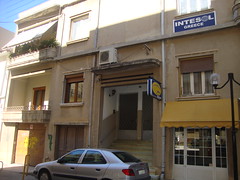
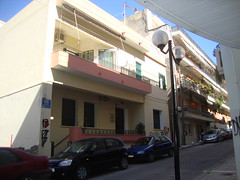
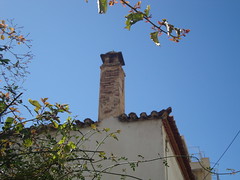
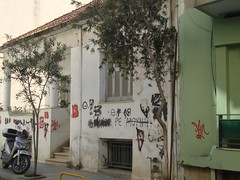
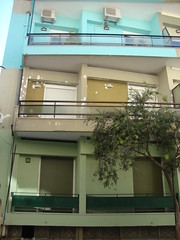
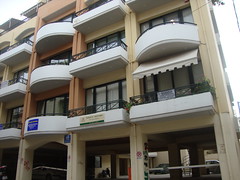
I first visited Chania in 1985 and stayed for a fortnight. Loved every bit of it. Even coming from Salonica it felt so cretan and cosmopolitan at the same time, the food, the people, the atmosphere. Looking forward to visiting this year too after all these years.
ReplyDelete